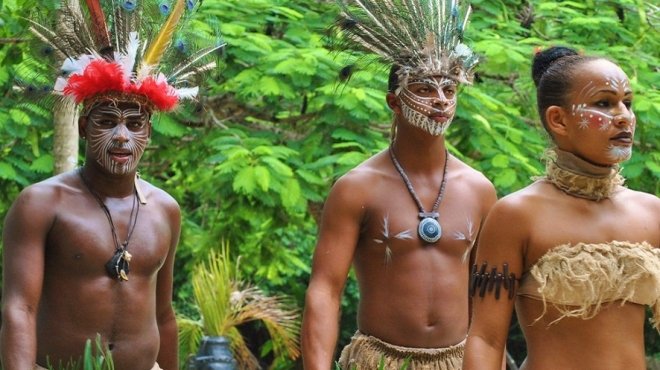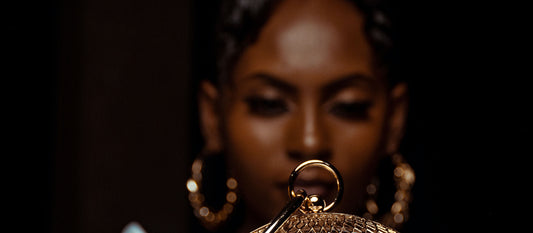A direct translation of the word "Taíno" signified "men of the good".[16] Additionally, the indigenous people of Hispaniola used this term to indicate that they were "relatives".[17][full citation needed] The Taíno people, or Taíno culture, has been classified by some authorities as belonging to the Arawak. Their language is considered to have belonged to the Arawak language family, the languages of which were historically present throughout the Caribbean, and much of Central and South America.
The ancestors of the Taíno entered the Caribbean from South America. At the time of contact, the Taíno were divided into three broad groups, known as the Western Taíno (Jamaica, most of Cuba, and the Bahamas), the Classic Taíno (Hispaniola and Puerto Rico) and the Eastern Taíno (northern Lesser Antilles). A fourth, lesser known group went on to travel to Florida and divided into tribes. At present, we know there are four named tribes; the Tequesta, Calusa, Jaega and Ais. Other tribes are known to have settled in Florida, but their names are not known.
Many Taíno implements and techniques were copied directly by the Europeans, including the bohío (straw hut) and the hamaca (hammock), the musical instrument known as the maracas, and the method of making cassava bread. Many Taino words persist in the Puerto Rican vocabulary of today. Names of plants, trees and fruits includes: maní, leren, ají, yuca, mamey, pajuil, pitajaya, cupey, tabonuco and ceiba. Names of fish, animals and birds includes: mucaro, guaraguao, iguana, cobo, carey, jicotea, guabina, manati, buruquena and juey. As well as other objects and instruments: güiro, bohío, batey, caney, hamaca, nasa, petate, coy, barbacoa, batea, cabuya, casabe and canoa. Other words were passed not only into Spanish, but also into English, such as huracan (hurricane) and hamaca (hammock). Also, many Taíno superstitions and legends were adopted and adapted by the Spanish and still influence the Puerto Rican imagination.
The Spaniards, who first arrived in the Bahamas, Cuba, and Hispaniola in 1492, and later in Puerto Rico, did not bring women in the first expeditions. They took Taíno women for their common-law wives, resulting in mestizo children. Sexual violence in Hispaniola with the Taíno women by the Spanish was also common. Scholars suggest there was substantial racial and cultural mixing in Cuba, as well, and several Indian pueblos survived into the 19th century.
The Taíno became nearly extinct as a culture following settlement by Spanish colonists, primarily due to infectious diseases to which they had no immunity. The first recorded smallpox outbreak in Hispaniola occurred in December 1518 or January 1519. The 1518 smallpox epidemic killed 90% of the natives who had not already perished. Warfare and harsh enslavement by the colonists had also caused many deaths. By 1548, the native population had declined to fewer than 500. Starting in about 1840, there have been attempts to create a quasi-indigenous Taino identity in rural areas of Cuba, the Dominican Republic, and Puerto Rico. This trend accelerated among the Puerto Rican community in the United States in the 1960s.

Sources:Black History Month UK - https://www.blackhistorymonth.org.uk/article/section/pre-colonial-history/taino-indigenous-caribbeans/Welcome to Puerto RicoWikipediaUnited Federation of Taino People



